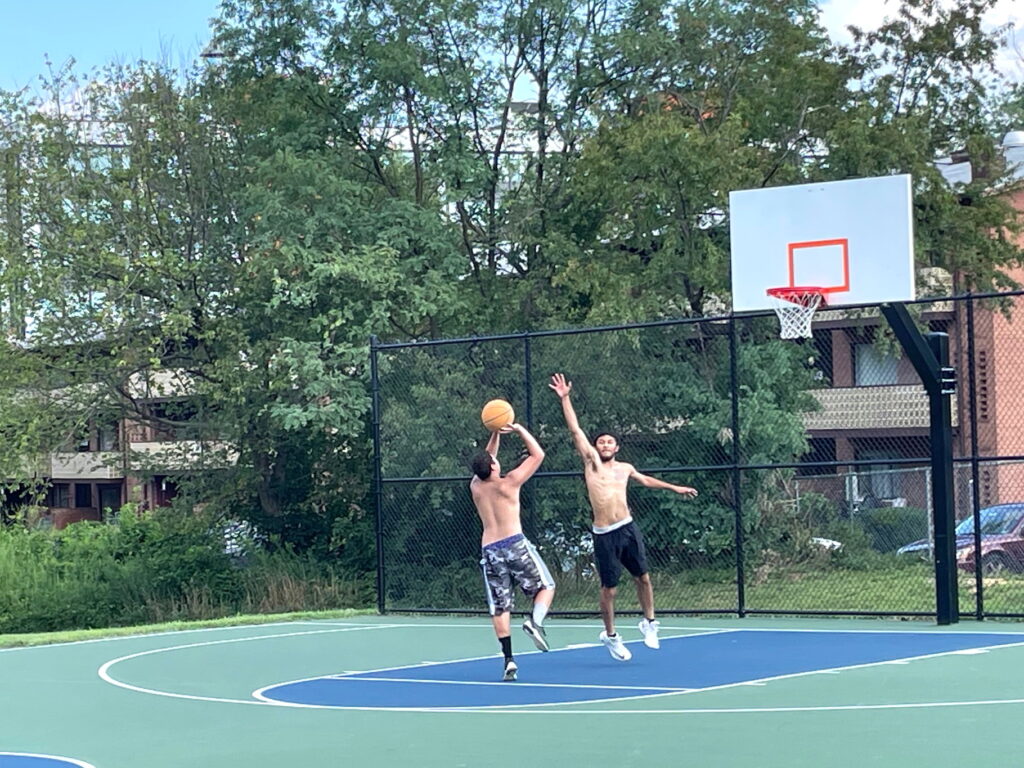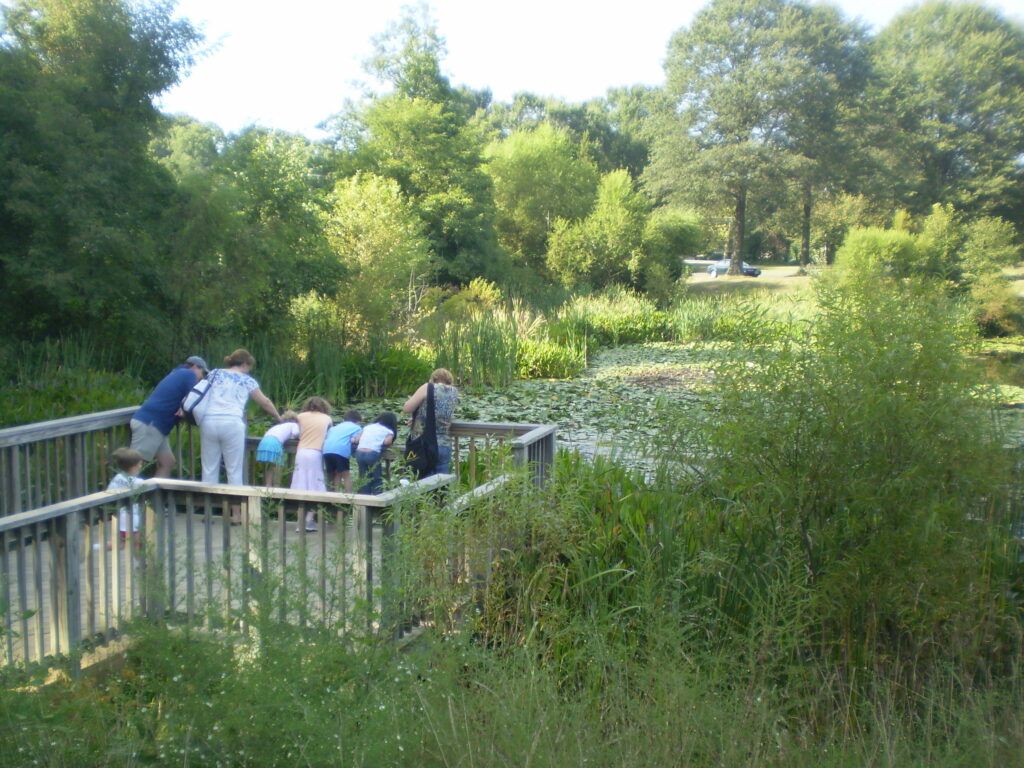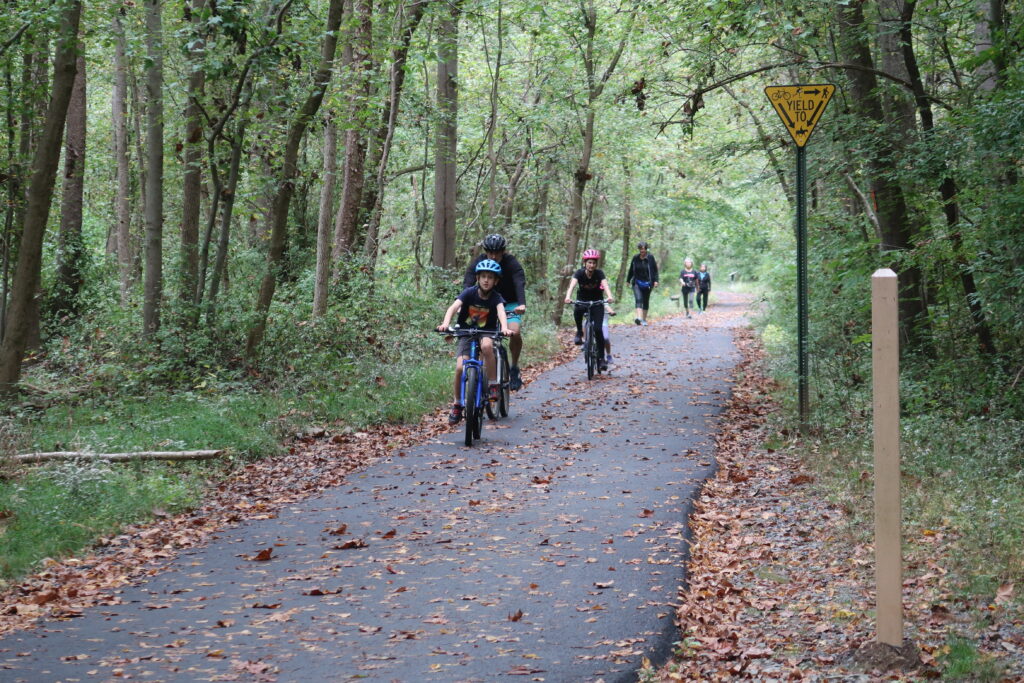Park Authority report sets a framework for park investment priorities

It’s clear that Mason District – especially Bailey’s Crossroads and Seven Corners – has fewer green spaces than other areas of Fairfax County.
That makes it especially important for Mason residents to weigh in on the Park Authority’s draft Parks, Recreation, Open Space, and Access Strategy, which sets priorities for park development and improvements over the coming years.
The report addresses four key areas: park access, habitat connectivity, park experiences, and equity.
The Park Authority is hosting two virtual meetings on the report, on July 18 at 6:30 p.m. and July 25 at 6:30 p.m. Comments will be accepted through Aug. 6. Take a brief survey here.
The draft report says the strategy is “a data-driven approach to guide park investments so that all communities have access to a quality park, no matter where you live in Fairfax County.” It proposes a framework for setting priorities for park projects.
Here are some highlights from the draft report:
Park access
All residents should have safe access to a park within a 10-minute walk, or half a mile, from home. According to the report, 52 percent of residents can walk to a park within 10 minutes, and 48 percent cannot.
Traditionally, the Park Authority measured 10-minute proximity to a park by considering a half-mile distance as the crow flies from the edge of parkland.

The agency now believes a better way to measure access is to consider park entrances and street networks. Proximity would be determined by figuring out how long it would take a person walking at 3.1 miles per hour to navigate existing sidewalks and crosswalks to get to a park entrance.
Improving 10-minute walk access to parks could be done by adding park entrances and trailheads; collaborating with partners to remove barriers by adding sidewalks, crosswalks, and stream crossings; and acquiring parkland in areas that do not have access to a park.
Complete parks
Just being able to get to a park easily is not enough. The “complete parks vision” calls for all residents to have access to a variety of recreational experiences within a 10-minute walk or five-minute drive from home.
The report says residents should have access to:
- active recreation, such as sport courts, trails, playgrounds, and other experiences that promote physical activity.
- passive or contemplative recreation experiences, such as outdoor seating areas, walking paths, and gardens.
- social recreation, such as picnic areas and outdoor concerts or festivals.
- natural and cultural recreation, such as places to enjoy nature, wildlife habitats, and historic or cultural sites.

The Park Authority proposes a “park experience score” to determine the most typical experience at each park. The scores will be used to make data-driven decisions about investments to parks with the greatest need for more recreation experiences.
Enriching habitat connectivity
A more biodiverse environment creates thriving habitat communities, Facilitating a connected network of habitat corridors would improve ease of access for wildlife and community members.
The report recommends analyzing habitat health to determine which park areas are most in need of protection, conservation, and restoration. This should be done by expanding the tree canopy and eliminating invasive species.
The tree canopy provides an array of environmental and human health benefits, including air pollution mitigation, reduced stormwater runoff, and shade for communities, which cools air temperatures and mitigates the urban heat island effect.

Trees also absorb and store carbon dioxide, improve soil, and provide a home for wildlife.
The Park Authority is conducting a site-specific, multi-year inventory of all habitat types throughout the county. When it is completed, it will serve as the foundation for a habitat health analysis.
Equity lens
Fairfax County’s One Fairfax Policy, adopted in 2016, says all residents deserve an equitable opportunity for success, regardless of race, color, nationality, sex, sexual orientation, religion, disability, income, or where they live.
In applying One Fairfax to parks, the report calls for the Park Authority to take into account racial and social equity and population density when prioritizing park projects and recreation needs.
The Park Authority’s equity lens is a composite of the Park Authority Racial Equity Index and population density, which is the number of residents served within a geographical area.
The index is based on eight indicators within U.S. Census block groups: low-income occupations, limited English-speaking ability, low educational attainment, median household income, households without a vehicle, households without health insurance, homeownership, and severely cost-burdened renters.
